Salon app security is a critical aspect of maintaining the trust and safety of both customers and service providers. In an increasingly digital world, where personal data and payment information are often stored within mobile applications, implementing robust security measures is crucial.
A secure salon app protects sensitive information such as names, addresses, booking details, and payment data, safeguarding users from data breaches and fraud. To understand how to secure a salon app, it’s essential to implement strong encryption, multi-factor authentication, and regular security updates.
Additionally, strong app security helps in building a reliable reputation for the business, fostering customer loyalty and confidence. As salons continue to adopt digital solutions for booking, marketing, and customer management, it’s essential to stay proactive in addressing potential security threats.
This blog explores key aspects and an extensive salon app security guide for securing apps effectively.
Key Takeaways
Salon app security is mandatory in 2025 to protect them from breaches, as they handle sensitive customer data, payment details, and other information.
Compliance with global data protection regulations like GDPR, CCPA, PCI-DSS, and HIPAA is mandatory to avoid legal penalties.
Key security features for salon apps include multi-factor authentication, data encryption, secure payment gateways, and AI fraud detection.
Common threats are data breaches, payment fraud, ransom attacks, account takeovers, API vulnerabilities, and bot attacks.
Steps for securing the salon app include secure coding, strong authentication, secure API communication, and app shielding against tampering.
Partnering with JPLoft enhances app protection with tailored encryption, phishing recognition, and prompt reporting of security incidents.
All about Salon App: Market Study
Salon apps are digital platforms designed for beauty and wellness businesses, providing a highly convenient experience for both salons and their clients.
These apps streamline appointment booking, allow clients to choose services and stylists, and enable secure online payments, all from their smartphones. Advanced features, such as automated reminders, loyalty programs, and personalized offers, boost client retention and satisfaction.
Salon owners benefit from improved operational efficiency through tools that facilitate schedule management, inventory tracking, and client data storage. Modern salon apps also integrate review systems, enabling users to check ratings and feedback before booking.
By automating administrative tasks and enhancing personalized service delivery, salon apps help businesses reduce no-shows, increase revenue, and provide a seamless, enjoyable customer experience.
Now, let’s look at the current stats of the salon app industry to better understand the current market:
-
As estimated by Fortune Business Insights, the global salon services industry was valued at USD 247.02 billion in 2024 and is expected to reach USD 447.76 billion by 2032.
-
According to Mordor Intelligence, the spa and salon software market is valued at USD 1.01 billion in 2025 and is expected to reach USD 1.69 billion by 2030 with a CAGR of 10.9%.
-
Salon booking software, a subset focusing on appointments, had a market value of USD 518 million in 2024, expected to double by 2025, according to Global Growth Insights.
-
As per research by Verified Market Reports, about 64% of salons now use digital tools to manage bookings and customer engagement.
-
According to Market Growth Reports, over 1.2 million salons worldwide have integrated digital tools for their service enhancements, with approximately 78% adopting online appointment systems.
We’ve seen how salon apps are making an impact in the beauty industry, but with all that growth and popularity comes a new salon app development challenge: keeping them secure.
Let’s talk about why secure salon apps in 2025.
Why Secure a Salon App in 2025?
One of the most critical moves for a salon business is to secure a salon app that directly impacts customer trust, brand reputation, and long-term growth.
With the beauty and wellness industry continuing to embrace digital transformation, these apps now also manage payments, personal data, loyalty programs, AI-driven recommendations, and even tele-beauty consultations. This makes them high-value targets for cybercriminals.
Salon app security in 2025 is crucial due to several evolving factors:
A] Sensitive Personal Data Protection
Salon apps often handle personal details, names, phone numbers, addresses, payment information, and appointment history. In 2025, the risk of identity theft and financial fraud remains high, making encryption and secure authentication essential to protect customer privacy and trust.
B] Compliance With Data Regulations
Privacy laws such as GDPR, California CCPA, and new regional mandates continue to expand their requirements. Failing to secure app data risks heavy fines, lawsuits, and reputational damage if customer data is leaked or misused.
C] Rise of Cyber Threats
Cybercriminals are increasingly targeting small businesses and service providers with ransomware, phishing, and app-specific exploits. A weakly secured app can lead to account hijacking, appointment tampering, and business interruptions, impacting customer experience and salon revenue.
D] Integration With Payment Systems
Many salon apps offer integrated online booking and payments. Securing these functions helps prevent transaction fraud, protects financial data, and reassures customers that their credit card information is safe.
E] User Trust and Competitive Advantage
In the current crowded market, a reputation for robust security can attract new users and retain existing ones. Customers are more likely to book and pay through apps they know are secure, supporting business growth.
To secure a salon app in 2025 is critical not only for legal compliance but also to ensure business continuity, maintain customer trust, and protect both clients and staff from evolving cyber threats. Now that we know why security matters more than ever in 2025, let’s take a look at the key features that can actually help you learn how to secure a salon app.
Salon App Security Features
Since salon apps in 2025 handle sensitive customer data, payments, and personalized services, the integration of the right security features not only protects users and their data but also builds long-term brand credibility.
Here’s an elaborated version:
► User Authentication
Being at the top of the guide to salon app security, a strong authentication system ensures that only authorized users can access the app. Beyond traditional username-password logins, apps should support multi-factor authentication (MFA) and biometric login (fingerprint/Face ID) for better protection.
► End-to-End Data Encryption
Encryption is essential to secure customer details like phone numbers, addresses, booking history, and payment information. Using end-to-end encryption (E2EE) protects sensitive conversations, online consultations, and payment details from hackers.
► Secure Payment Gateways
Since salon apps integrate digital wallets and credit cards, they must comply with PCI DSS (Payment Card Industry Data Security Standard). Features like tokenization, SSL certificates, and secure payment gateways (Stripe, PayPal, and Razorpay) ensure that financial transactions remain safe and fraud-proof.
► Fraud Detection and AI Monitoring
To secure a salon app, AI-powered monitoring tools can detect unusual activity, such as multiple failed login attempts, suspicious payment patterns, or bot-driven fake bookings. Partnering with an AI app development company to integrate features like real-time fraud detection systems, security alerts, login notifications, and data access logs helps identify and block threats before they cause damage.
► Regular Security Updates and Patch Management
To secure an online salon mobile app, integrate an auto-update mechanism to roll out the latest security patches. Regular penetration testing and vulnerability scanning ensure that any loopholes are identified and fixed immediately to avoid any type of cyber fraud.
The right security salon app features make it more than just a beauty-tech app. They transform it into a trusted platform where users feel confident sharing their data and making transactions.
Understanding the essential security features is crucial, but it’s equally important to be aware of the potential risks. Before looking at the steps to secure a salon app, let’s first explore the top security threats salon apps should be prepared to face in 2025.
Top Security Threats to Avoid in 2025
The top security threats to avoid in 2025 reflect the rapid evolution of technology and tactics by cybercriminals. Here are the most critical risks organizations and salon owners should look out for:
1. Data Breaches and Identity Theft
Since the major importance of salon apps for beauty businesses consists of storing sensitive customer data like names, phone numbers, email addresses, card details, and even personal beauty preferences, any breach can lead to identity theft and financial fraud.
2. Payment Fraud and Digital Wallet Exploits
With salon apps increasingly integrating mobile wallets and card payments, they become prime targets for payment fraud. Cybercriminals may attempt phishing attacks, fake payment confirmations, or card skimming. Without secure payment gateways and tokenization, salons risk heavy financial losses.
3. Ransomware Attacks
In ransomware attacks, hackers encrypt a salon’s booking records, customer database, or transaction logs and demand ransom for access. For salons that rely entirely on digital bookings, even a short downtime can result in major financial and operational disruptions.
4. Account Takeover Attacks (ATO)
Weak passwords and the reuse of credentials across multiple platforms make salon apps vulnerable to account takeovers. Hackers use stolen username-password combinations from other breaches to gain access to customer accounts, leading to unauthorized bookings or even theft of stored payment information.
5. Bot Attacks and Fake Bookings
Automated bots can flood salon apps with fake appointment bookings to disrupt services or perform brute-force login attempts to crack customer accounts. Bots powered by AI can mimic human behavior, making it difficult to detect fake activity without advanced bot management tools.
While startups learn how to start a salon app business, they should also be aware of the top security threats in 2025, which range from ransomware to API exploits. And these are not just some technical issues; they are business risks that directly affect customer trust and revenue. Anticipating these threats and proactively guarding against them with modern security is highly crucial.
Now that we've identified the key security threats facing salon apps in 2025, the next step is to look at a guide to salon app security to protect the app against them. Here are the essential steps to help secure your salon app effectively.
Steps to Secure a Salon App
Security is not a feature but a core strength of gaining customer loyalty and brand trust. Building an AI app for salon businesses in 2025 means handling sensitive customer information, digital payments, and sometimes even wellness or medical details.
To avoid breaches and maintain user trust, here are the key steps to secure a salon app:
Step 1. Secure Coding Practices
Adopting secure coding to create a salon app involves following industry standards and frameworks that minimize vulnerabilities such as SQL injection, cross-site scripting (XSS), and buffer overflow issues.
Developers should choose the most recent updated salon app tech stack, implement code reviews, static application security testing (SAST), and conceal code to protect against reverse engineering.
Step 2. Data Encryption
Encrypting data both in transit and at rest ensures sensitive customer information and payment details remain confidential. Use strong algorithms like AES-256 for stored data and TLS 1.2 or higher to secure communications. Employ end-to-end encryption for user interactions, shielding against interception or data breaches even if network security is compromised or devices are lost or stolen.
Step 3. Strong Authentication
Following a salon app security guide, implementation of multi-factor authentication (MFA) significantly raises security by requiring users to verify identity through multiple methods, e.g., passwords plus biometric scans or one-time codes sent to trusted devices. Password policies enforcing complexity and regular changes also help. These measures reduce risks of credential theft, unauthorized account access, and protect sensitive salon and client data.
Step 4. Secure API Communication
APIs must be secured with proper authentication mechanisms, such as OAuth or JSON Web Tokens (JWT), to validate requests. Ensure all API calls use HTTPS with SSL pinning to avoid interception or man-in-the-middle attacks. Rate limiting protects against brute force or denial-of-service attacks. Strict input validation is essential to prevent injection attacks and data leakage via APIs.
Step 5. Regular Security Testing
Continuous security assessments detect vulnerabilities proactively. Use a combination of static analysis (SAST), dynamic analysis (DAST), and penetration testing to uncover bugs across development and deployment. Testing should simulate real-world attack vectors and be scheduled regularly. This reduces the likelihood of exploited bugs that could compromise customer data or disrupt salon services.
Step 6. Minimal Data Storage and Access Control
For improving salon app security, limit stored personal and payment data to only what’s essential. This reduces exposure in case of a breach. Store sensitive data securely on backend servers instead of app devices, minimizing risk from lost or stolen phones. Implement role-based access control (RBAC) that enforces least privilege, so employees only access information necessary for their specific duties, protecting data from insider threats.
Step 7. App Shielding and Tamper Detection
Protect the app from reverse engineering and tampering by applying code obfuscation, which makes the app logic harder to decipher. Employ runtime application self-protection (RASP) to detect and respond to attacks in real time. This prevents hackers from injecting malicious code or altering app behavior, ensuring app integrity even on compromised devices or networks.
Step 8. Compliance and Data Privacy Regulations
Compliance with regulations such as GDPR, CCPA, and PCI-DSS is mandatory for protecting client privacy and avoiding legal penalties. It requires transparency on data usage, secure data storage, breach notifications, and user rights over personal data. Regular audits and updates to privacy policies help salons maintain trust and adhere to evolving data protection laws.
Step 9. Secure Software and Network Environment
Securing the entire salon IT environment involves keeping all software and operating systems current with patches that fix vulnerabilities. Employ firewalls and endpoint security tools on devices and networks. Use separate Wi-Fi networks for guests and staff to prevent unauthorized access to sensitive salon systems, and implement VPNs for remote access to secure data transmission.
Step 10. User and Staff Education
Training salon staff and customers in cybersecurity best practices reduces human error, which is a major security weakness. Educate them on creating strong passwords, identifying phishing attempts, securing mobile devices, and the importance of regularly updating software. Awareness campaigns help ensure timely reporting of security incidents, protecting salon data from social engineering and insider threats.
Salon mobile app security is not a one-time activity. It’s an ongoing process of mobile app testing, updating, and educating. Following these previous steps will help you ensure your salon app is compliant, resilient, and trustworthy. To ensure full protection and avoid legal pitfalls, it's also important to follow relevant compliance standards and regulations.
Let’s take a closer look at what you need to know.
Compliance and Regulations to Follow in Salon App Security
As salon apps grow into full-scale digital platforms handling personal data, payment details, and even health-related information about clients, meeting global and regional compliance standards is mandatory. Non-compliance can result in hefty fines, reputational loss, and customer distrust.
Below are the key regulations every salon app in 2025 should follow:
1. GDPR (General Data Protection Regulation - EU)
The GDPR is one of the strictest data protection laws, applying to any business (even outside Europe) that serves EU citizens. For salon apps, this means:
-
Collecting data only with user consent and being transparent about its use.
-
Allowing users to access, modify, or delete their data at any time.
-
Implementing strong data encryption, anonymization, and secure storage.
-
Appointing a Data Protection Officer (DPO) is required if processing large volumes of data.
2. CCPA & CPRA (California Consumer Privacy Act & Privacy Rights Act - USA)
For salon apps serving customers in California, the CCPA and CPRA demand:
-
Clear disclosure of what customer data is collected and how it’s shared.
-
Giving users the “right to opt out” of data sharing with third parties.
-
Protecting sensitive customer data like location, biometrics, and financial details.
-
Ensuring stronger penalties for data breaches affecting minors.
3. PCI DSS (Payment Card Industry Data Security Standard)
Since salon apps process payments, compliance with PCI DSS is crucial:
-
Encrypting payment data and cardholder details.
-
Using secure payment gateways and avoiding storing raw card data.
-
Performing regular vulnerability scans and audits.
-
Ensuring tokenization and multi-layer authentication for transactions.
4. Local Data Protection Laws (UK, Middle East, etc.)
Salon apps expanding globally or targeted locations should align strictly with the local laws and compliance:
-
UK: The UK-GDPR & Data Protection Act 2018 mirrors GDPR but with UK-specific requirements.
-
Middle East (UAE, Saudi Arabia): Data localization laws may require storing customer data within the country.
-
Brazil: LGPD applies to Brazilian citizens’ data. It emphasizes user consent, data minimization, and breach notifications.
5. ISO/IEC 27001 Certification (Information Security Management)
While not a law, ISO/IEC 27001 is an international standard for managing information security. Achieving this certification proves that a salon app:
-
Has a robust information security management system (ISMS).
-
Regularly monitors and improves security practices.
-
It is audit-ready for international business expansions.
Compliance is not just about avoiding penalties and fines. It’s about building customer trust, securing sensitive data, and enabling safe business expansion. Creating an app for beauty services in 2025 must properly align with GDPR, CCPA/CPRA, PCI DSS, HIPAA, and regional laws to ensure long-term sustainability and global competitiveness.
Understanding the key compliance requirements and regulations is essential, but seeing how these principles play out in real life can provide even greater insight.
Let’s explore some real-world cases that highlight the importance of a salon app security guide.
Real-World Cases for Salon App Security
Salon apps are easy targets for cyberattacks and fraud. Below are some real-life cybersecurity fraud cases and scenarios explaining why it is important to secure an online salon mobile app:
► UK Beauty Salon Data Breach
Year: 2020
Incident Description: 5,000+ client records compromised due to weak encryption and outdated software
Impact/Lesson Learned: Financial penalty, loss of trust, GDPR fine
► Ellen Conlin Hai & Beauty (Scotland)
Year: 2015
Incident Description: Ransomware attack locked the database, erased appointments, wage data, and a ransom was paid in Bitcoin
Impact/Lesson Learned: Disrupted business, forced ransom payment
► Australian Salon’s Fraudulent Payment Email
Year: 2023
Incident Description: The salon paid the bill via a scam email and was also hit with VoIP hacking, costing $35,000.
Impact/Lesson Learned: Financial losses, need for verification
► San Francisco Nail Salon
Year: 2024
Incident Description: Their salon app consisted of strong security (2FA, tokenization) and blocked fraud attempts from causing any damage.
Impact/Lesson Learned: Improved protection, example of success.
► SalonBiz Data Leak (Global)
Year: 2024
Incident Description: A data breach exposed 23,867 customers' info (names, emails, phone numbers, addresses, etc.) via the SalonBiz management app.
Impact/Lesson Learned: Sensitive info leak demonstrates large-scale risk for salon software.
► Massachusetts Salon Unlawful Access
Year: 2024
Incident Description: US Secret Service agents picked the lock, disabled the cameras, and entered the salon without permission.
Impact/Lesson Learned: Physical and digital security breaches highlight the need for robust controls.
Real-world salon app breaches have resulted in heavy financial loss, regulatory penalties, business interruptions, and loss of trust. Proactive measures such as strong authentication, regular backups, employee training, hiring dedicated developers, and regulatory compliance are practical strategies all salons should adopt.
Learning from real-world cases helps us understand the challenges firsthand. Now, let’s dive into the best practices you can implement for how to secure a salon app in 2025.
Best Practices to Secure a Salon App in 2025
Securing a salon app by hiring a mobile app development company is about balancing the user convenience with robust protection against modern cyber risks.
Below are the most effective practices to safeguard your app against threats like ransomware, payment fraud, data breaches, and phishing attacks:
1. Implement Strong User Authentication
-
Use multi-factor authentication (MFA) with OTP, email verification, or authenticator apps.
-
Integrate biometric logins (fingerprint, Face ID) to add convenience and security.
-
Enforce strong password policies with regular reset reminders.
-
Resolves: Prevents account takeovers and credential stuffing attacks.
2. Secure Payments with PCI-DSS Compliance
-
Always use trusted payment gateways (Stripe, Razorpay, PayPal, etc.) that support tokenization.
-
Apply end-to-end encryption (E2EE) for payment data in transit.
-
Enable real-time fraud monitoring for unusual transaction patterns.
-
Resolves: Reduces risks of payment fraud, digital wallet exploits, and financial theft.
3. Regular Security Updates and Patch Management
-
Release frequent security patches to fix vulnerabilities before hackers exploit them.
-
Perform penetration testing and code audits regularly.
-
Automate update rollouts so customers always use the latest, safest app version.
-
Resolves: Defends against malware, ransomware, and outdated software risks.
4. Cloud Security and Backups
-
Choose reputable cloud providers with built-in compliance and encryption.
-
Enable automated data backups and disaster recovery protocols.
-
Restrict server access using firewalls, VPNs, and IAM (Identity Access Management).
-
Resolves: Minimizes risks of cloud misconfigurations and ensures data recovery during ransomware attacks.
5. Detect and Block Fraudulent Activity with AI
-
Deploy AI in salon apps for fraud detection tools that monitor login attempts, booking behavior, and payment activity.
-
Use CAPTCHA & bot detection to stop fake bookings and brute-force attacks.
-
Send real-time alerts to customers when suspicious activity is detected.
-
Resolves: Counters bots, phishing attempts, and fake bookings.
These best practices, such as multiple authentication, encryption, payment security, cloud safety, fraud detection, and compliance, have been adopted by the best salon apps in the industry. Businesses should create salon apps like Booksy that are not only convenient but also future-proof against cyber threats in 2025.
Partner with JPLoft and Secure Your App
In today’s digital landscape, the security of your salon app is crucial to protect your clients' sensitive information and maintain your business’s reputation. JPLoft specializes in advanced mobile app security solutions tailored to the unique needs of the beauty and salon industry.
Our comprehensive security services include robust encryption protocols, multi-factor authentication, secure API integration, and real-time threat detection to ensure your salon app remains resilient against data breaches and unauthorized access.
Beyond technology, JPLoft, an experienced beauty salon app development company, provides ongoing support and security awareness training for your team, empowering your staff to identify and respond to potential security issues proactively. Our proven track record in app security and commitment to client success make us the ideal partner for your salon’s digital protection.
Don’t leave your salon app vulnerable. Partner with JPLoft today and secure a safer, smarter future for your business and your customers.
Conclusion
Understanding how to secure a salon app in 2025 has become a fundamental necessity for protecting both customer trust and business viability. With sensitive client information, payment data, and appointment details at stake, robust security measures safeguard against data breaches, fraud, and cyberattacks. Implementing best practices such as strong authentication, data encryption, secure APIs, and regular vulnerability testing ensures that the app remains resilient against evolving threats.
Compliance with data protection laws not only avoids costly penalties but also builds credibility with users. A secure salon app enhances operational continuity, safeguards reputation, and creates a competitive edge in the crowded beauty industry. Prioritizing app security ultimately empowers salons to focus on delivering excellent customer experiences confidently and safely.
FAQs
To secure a salon app in 2025, implement multi-factor authentication, end-to-end encryption, and PCI-DSS-compliant payments. Regularly test for vulnerabilities, secure APIs, and use trusted cloud providers with backups. Ensure compliance with GDPR, CCPA, and DPDP. Finally, train staff and educate users to prevent phishing and insider risks, building trust and long-term safety.
Salon apps handle sensitive customer data, including personal details, booking history, and payment information. The biggest threats in 2025 include data breaches, ransomware, phishing attacks, API vulnerabilities, insider misuse, and bot-driven fake bookings.
Yes. Depending on the location of the salon, apps must comply with regulations like GDPR (EU), CCPA/CPRA (California), LGPD (Brazil), and local data protection laws. Non-compliance can result in hefty fines and reputational damage.
Security is an ongoing process. Salon apps should undergo regular penetration testing, vulnerability scans, and patch updates at least quarterly, with immediate action taken when new threats emerge. Without proper security, this data is at risk of breaches, leading to financial fraud, identity theft, and loss of customer trust.
Employees are often the weakest link in cybersecurity. Training staff to recognize phishing attempts, securing their access with role-based permissions, and revoking access promptly when they leave the salon significantly reduces risks.





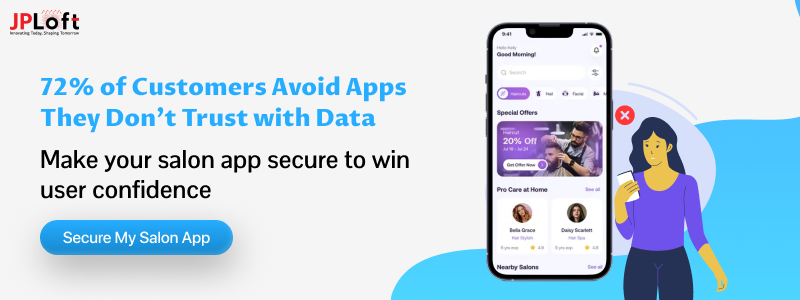
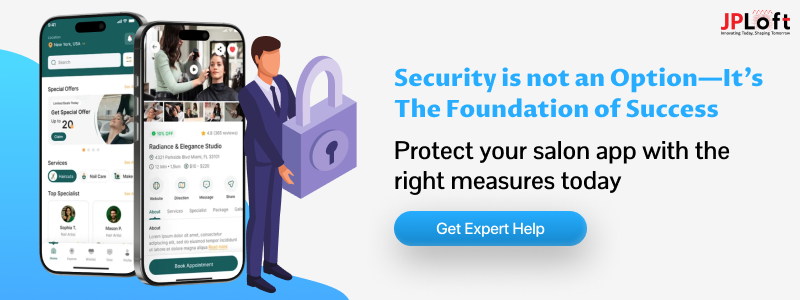

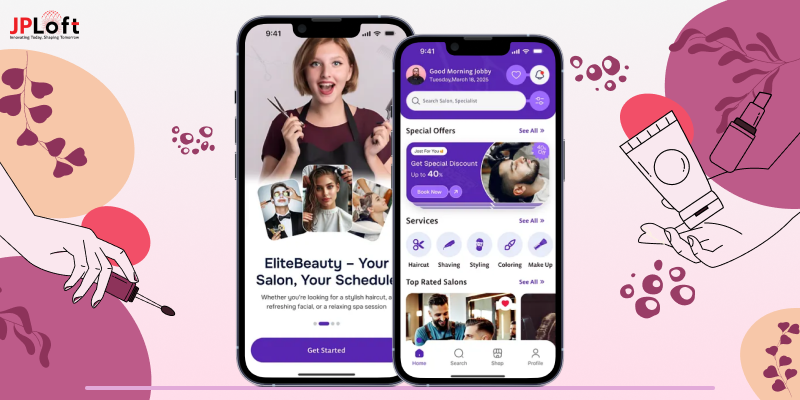
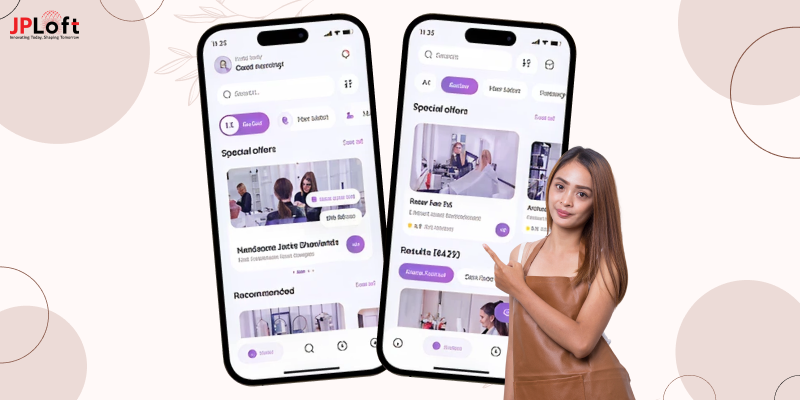
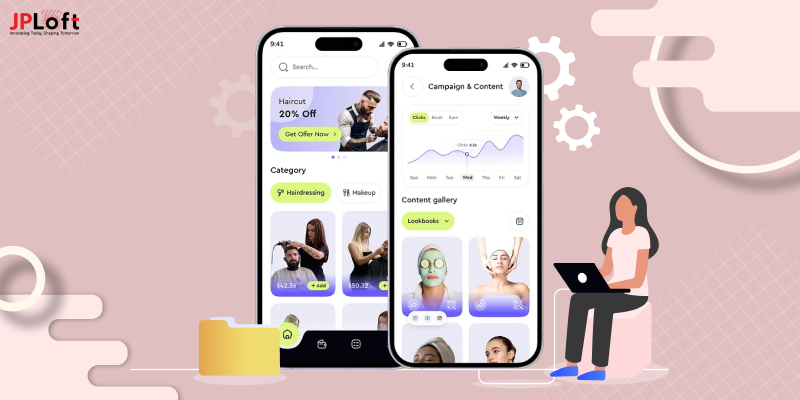


Share this blog